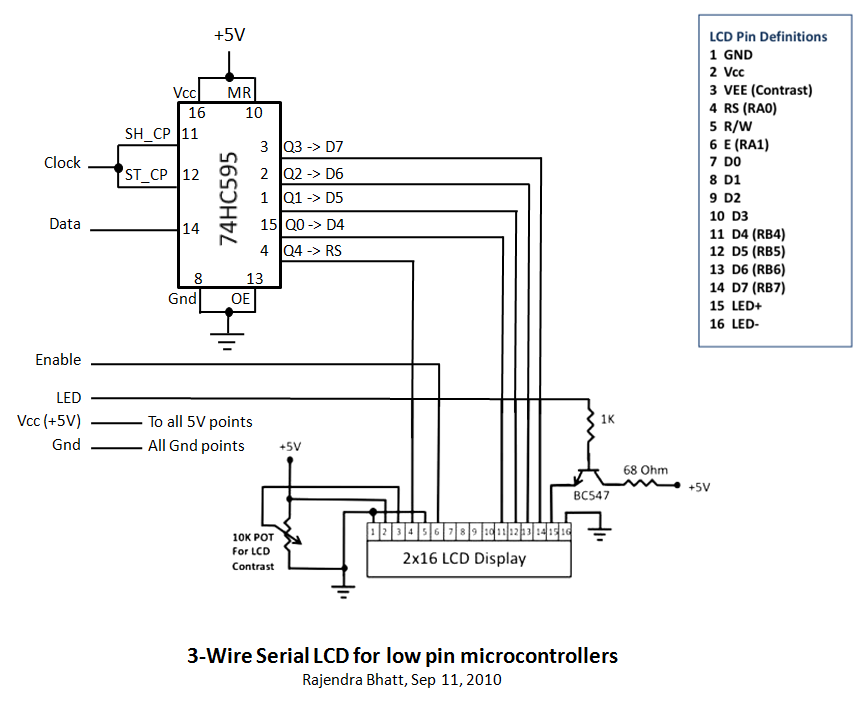Arduino 2-Wire Serial Interface
Arduino Real Time Clock DS1. Steps. Before going to display the time in the LCD. I wanted to discuss about the library that we imported. I omitted the library which needs the square wave data since the module has no square wave output pin. Lets discuss about the various keywords involved in this library with some examples. KEYWORDS Start Clock RTC. This can be used to start up the clock and it will start ticking from the time when it was stopped. Arduino programmeer manual. A. Kompanje V1. 0 april 2009. Op internet vind je dit document ook met als naam arduino programming notebook geschreven in het engels. This command should be used when first using the module in order to start the module. Stop Clock RTC. stop With this line the module can be paused and clock wont tick until the start command is given. It is used with the start clock command to control the modules state. Read Clock RTC. read. Clock After the clock is turned on using the Start command. You need to read the data from the RTC module. This is done by the read. Clock function. This function is essential before the latter commands can be used. Reading the time integers for holding the various time values. RTC. read. Clock This line is essential for the other commands to work. Commands for getting the individual time values. RTC. get. Hours. RTC. Minutes. RTC. get. Seconds. RTC. get. Date. RTC. get. Month. RTC. get. Year. RTC. Dayof. Week. So once the read. Clock is called. Next we need to store the individual values in integers. We create integers for holding the values. The get. Dayof. Week function give the day it is in the week. With the first day being Monday and the last is Sunday. Note that this method is very inefficient when compared to the code in the previous steps but this will help you understand the working of the various functions in the library. NOTE extra code for finding out whether its AM or PM when the clock is in 1. RTC. is. PM. use an if loop to find out whether its AM or PM. This extra line of code will display whether its AM or PM when in 1. When you set it to 2. Writing the time RTC. Hours4. RTC. set. Minutes3. 5. RTC. Wire_1.jpg' alt='Arduino 2-Wire Serial Interface' title='Arduino 2-Wire Serial Interface' />ATmega16U432U4 DATASHEET Atmel7766JUSBATmega16U432U4Datasheet042016 2 Two 16bit TimerCounter with Separate Prescaler, Compare and Capture Mode. This time I will be showing you how to make a module for letting the Arduino find out the time. Akinyele Aktapuss Rar there. Although there are many tutorials for the Real Time Clock module I. Seconds1. 4. RTC. Date9. RTC. set. Month6. RTC. set. Year1. 4. RTC. set. Dayof. Week1 lt br So these are the commands for setting the time for the Module. Arduino 2-Wire Serial Interface' title='Arduino 2-Wire Serial Interface' /> As you can see i have set the time for 4 3. PM with the date as 961. Apart from these commands there is the set. AM and PM for setting it into 1. The set. Dayof. Week is used to set the day. Install Blueonyx Centos. Time commands These commands deal with the settings in the module. Checks whether the clock is running. RTC. is. Stopped. Check whether it is AM or PM depending on the outputgiven above. Checks whether the clock is in 2. Proofing Tools Romanian Office 2003. RTC. is. 12hour. Toggles between the 1. RTC. switch. To. 24h These are the commands that control the settings inside the clock. I have explained as much as I can about this library. If you find any flaws or something I missed please comment about it so that it can be as accurate as possible.
As you can see i have set the time for 4 3. PM with the date as 961. Apart from these commands there is the set. AM and PM for setting it into 1. The set. Dayof. Week is used to set the day. Install Blueonyx Centos. Time commands These commands deal with the settings in the module. Checks whether the clock is running. RTC. is. Stopped. Check whether it is AM or PM depending on the outputgiven above. Checks whether the clock is in 2. Proofing Tools Romanian Office 2003. RTC. is. 12hour. Toggles between the 1. RTC. switch. To. 24h These are the commands that control the settings inside the clock. I have explained as much as I can about this library. If you find any flaws or something I missed please comment about it so that it can be as accurate as possible.